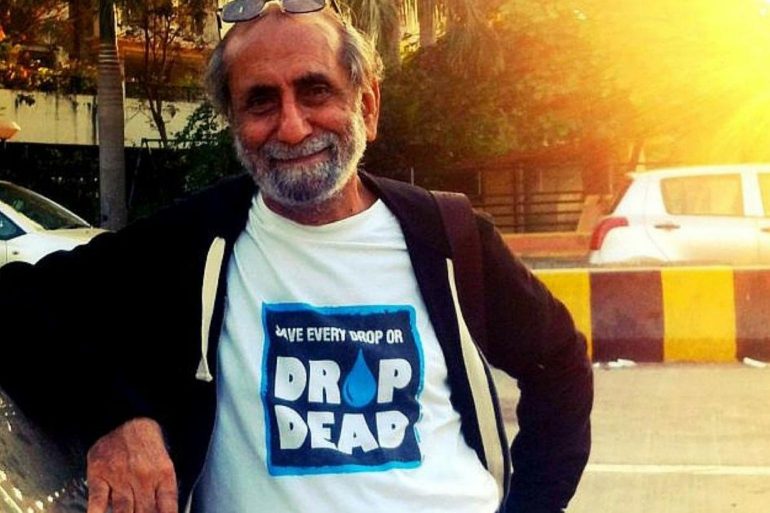As he enters the conference room of Mumbai’s Press Club, the most noticeable thing about Aabid Surti is his salt-and-pepper beard that covers a major part of his small face. The beard somehow marvelously chronicles the number of years he has spent in creating a massive and impressive body of work spanning genres and variety. 78-year old Surti is a national award winning painter, writer, illustrator, a one man NGO (Drop Dead) and one of the early cartoonists of India, who gave us the first ever “uncommon man”, the highly popular and eternal character Dabbuji.
While Surti was quite hopeful that the cartoon would click, it was flooded with negative letters and responses week after week. He wanted to give it 4-6 months but the deluge of criticism made him shut the door on it, temporarily.
The term ‘uncommon man’ instantly creates a kind of a parallel or contrast with the universally known RK Laxman’s The Common Man. Before you can even mention the thought, Surti validates it. “Unlike RK Laxman’s Common Man who is a quiet observer, Dabbuji interferes in everything. Sometimes he would win, sometimes he wouldn’t.” Now declared a prodigy, Dabbuji had quite a dreadful time when the cartoon series was first launched in 1956-57 in Gujarati. While Surti was quite hopeful that the cartoon would click, it was flooded with negative letters and responses week after week. He wanted to give it 4-6 months but the deluge of criticism made him shut the door on it, temporarily.
“They tried all the major Indian cartoonists of that period including Mario Miranda but they all suffered the same fate in the Hindi belt as I did in Gujarati with Dabbuji,” says Surti.
Dabbuji got a fresh lease of life again with Bennett Coleman & Company Limited’s (BCCL) Dharmyug magazine. And that was the beginning of a very long and charmed life. At that time, Dr. Dharamveer Bharti had come on board as the editor of Dharmyug, and being a nationalist, he was very adamant on bringing indigenous Indian cartoons in the magazine. Most cartoons that were being published at that time were western including Phantom, Tarzan, Mandrake the Magician, etc. “They tried all the major Indian cartoonists of that period including Mario Miranda but they all suffered the same fate in the Hindi belt as I did in Gujarati with Dabbuji,” says Surti. He wasn’t a very popular cartoonist then, and thus he was called last. He was working with another BCCL’s monthly magazine for children called Parag where he published a cartoon series Dr. Chinchoo ke Chamatkar, which taught science to children through humor. When invited by Dharmyug, Surti decided to translate all the rejected Dabbuji’s strips in Hindi.
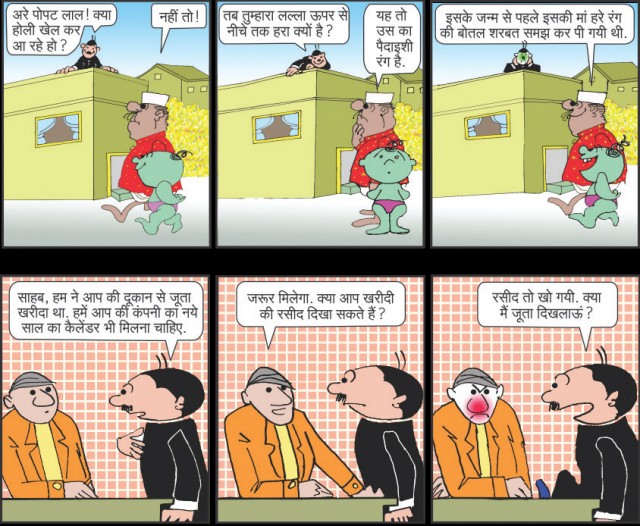
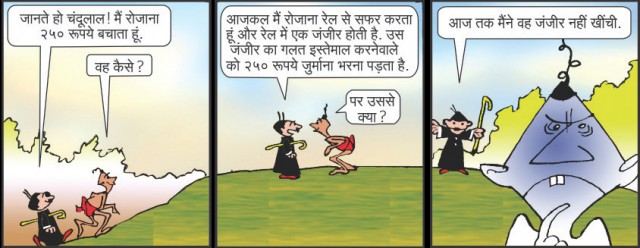
They were a part of the small group of fiercely original and Indian comics. Bahadur, born and brought up in a completely Indian context, was considered to be at par with western superheroes.
Apart from Dabbuji, Surti is also credited with another interesting superhero series Bahadur, which was created for Indrajal Comics in 1976. This was based on one of the biggest problems of that time, the bandits’ attacks on various villages in India. The basic premise of the creation of Bahadur was more or less similar to Dabbuji, which was to create an indigenous character. What a lot of other comics were doing at that time were just more or less copying western characters, with exceptions like Pran Kumar Sharma’s Chacha Chaudhury, VT Thomas’ (Toms) characters Boban and Molly for Malayala Manorama, Amar Chitra Katha (which is a whole other genre) and a few more. And thus, both Dabbuji and Bahadur (and some other characters created by Surti like Inspector Azaad and Shuja) are important creations in the whole scheme of things. They were a part of the small group of fiercely original and Indian comics. Bahadur, born and brought up in a completely Indian context, was considered to be at par with western superheroes.
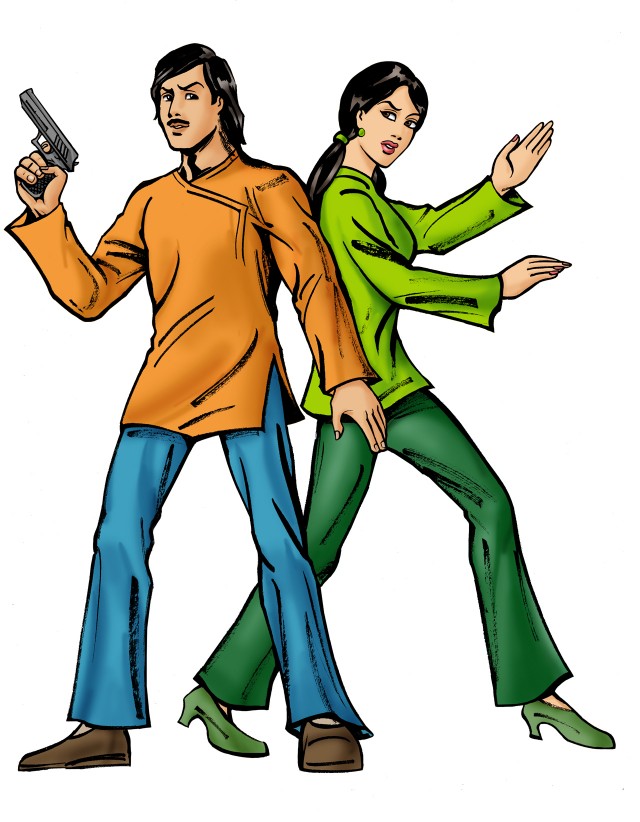
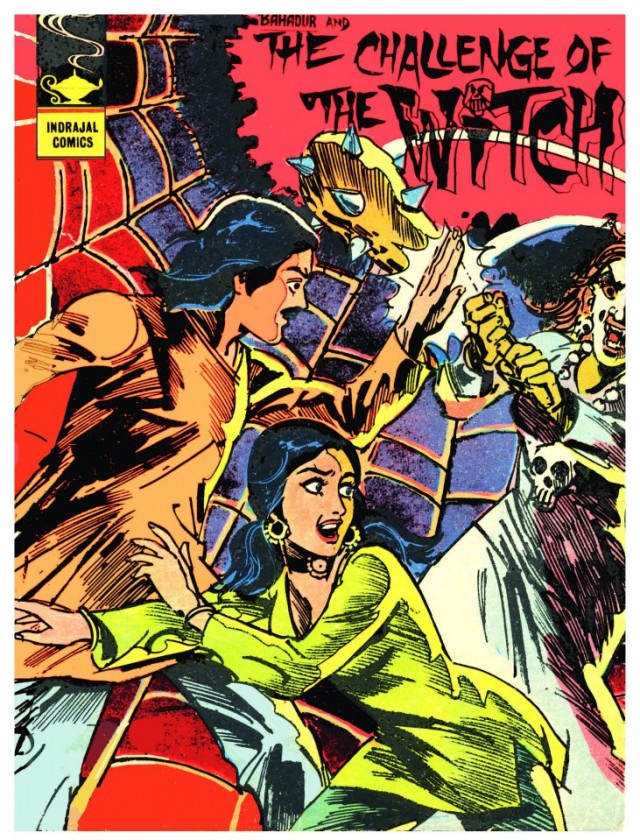
While each strip of Dabbuji was drawn and written entirely by Surti, for other cartoon series, he worked along with various figuredrawing artists (Late Govind Brahmania, Ram Mohan, Pratap Mullick, etc.). He told them the basic techniques and then followed it with instructions. For this, his stint in the Hindi film industry came into play where he had learnt various techniques including storyboarding, editing, etc.
In the 1940s, he narrates, when the Second World War soldiers used to take trains from VT (Victoria Terminus station in Bombay) after alighting at the Gateway of India, Surti along with other kids used to run after them to get some goodies that the soldiers would usually throw out.
Surti, who does cartooning (and even writing for that matter) to support his first love — painting, had a rather intriguing start to this art. In the 1940s, he narrates, when the Second World War soldiers used to take trains from VT (Victoria Terminus station in Bombay) after alighting at the Gateway of India, Surti along with other kids used to run after them to get some goodies that the soldiers would usually throw out. One day somebody threw out a comic book out of the window of the train and the children fought for it. One of the tattered pages that became part of Surti’s bounty hunting was a page with a Mickey Mouse drawing on it. He went home and copied the cartoon and then kept copying it over and over again. He was about 7 years old at that time.
To close the fascinating loop on Dabbuji, we ask Surti as to what’s the future for the series now. All the old and faded Dabbuji strips are now being refreshed (or remixed, as Surti calls it) on Photoshop and are being turned into a series of albums by the National Book Trust (NBT). One of these albums has already been published, while others are in the making. Surti used to get Rs 15 for one Dabbuji strip when it started and the last payment he got for it by Dharmyug was Rs 250. For the new “remixed” Dabbuji, Surti commands Rs 2500 as his fees. Interestingly, NBT is also publishing a lot of other work of Surti’s including some new children’s story books. Reviving Dabbuji is indeed a great step by Surti and NBT. This will make sure that Dabbuji doesn’t transform into moldy and dusty archives in gradually diminishing libraries and can be easily handed over to the new generations in the formats they prefer.
This article was originally published in Kyoorius Magazine 18.

